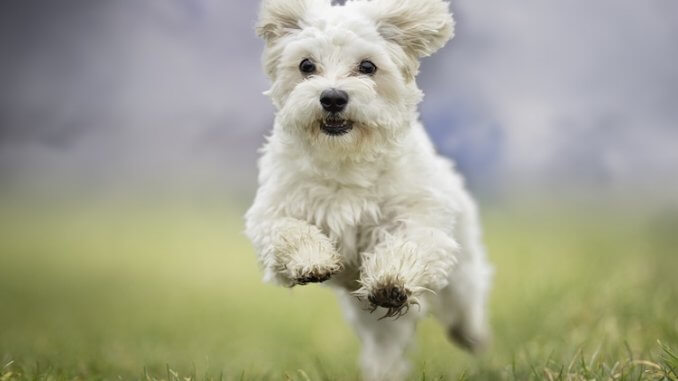
Who hasn’t heard of the marvelous Maltese dog?
Adorable little bundles of white fur, these dogs have been taking-over family households for centuries.
First seen in Greece, this breed is favored for their cute appearance and hypoallergenic coat.
However, there is more to this dog than their beautiful white coat. They are intelligent, loyal, and make a brilliant companion for anyone looking for a loyal lap-dog.
Whether you are about to adopt a Maltese puppy, or are just interested in this cute companion, this article will take you through everything you need to know about these brilliant canines!
TABLE OF CONTENTS
- 11. The Maltese Was First Bred In The 4th Century By Wealthy Families
- 10. They Were Recognized By The American Kennel Club In 1888
- 9. Maltese Dogs Eat One Cup Of Kibble Each Day
- 8. The Maltese Dog Is Hypoallergenic
- 7. They LOVE To Play
- 6. Their Nickname Is "Velcro"
- 5. They Don't Suffer From Small Dog Syndrome
- 4. A Maltese Can Have Two Coat Types (Long or Short Hair)
- 3. They Are Very Intelligent
- 2. A Maltese Dog's LifeSpan Is 12 To 15 Years
- 1. Maltese Puppies Can Cost $10,000 USD
- Maltese FAQs
- Summary
- Other Types of Malteses and Maltese Mixes
11. The Maltese Was First Bred In The 4th Century By Wealthy Families
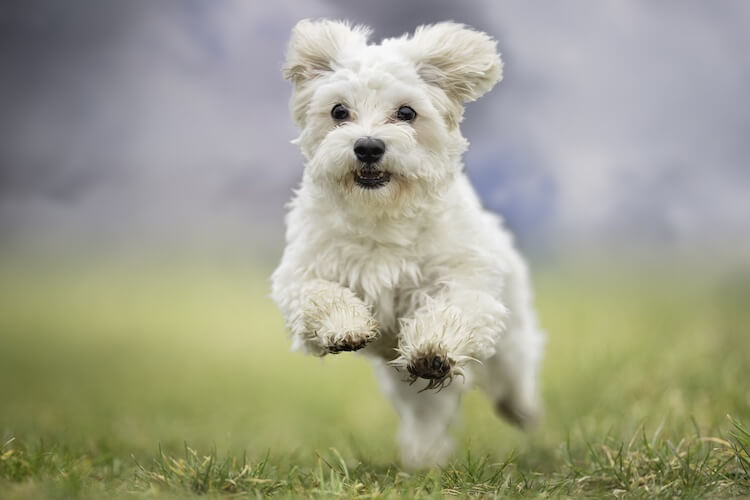
Originally from Malta, these small dogs were often seen on the arm of the wealthy nobility in Italy and Greece. In the 4th and 5th century, Italians were fascinated by this dogs “geometric beauty”, and they rapidly grew in popularity.
This historic lap-dog was often referenced in artwork or literature, even Aristotle referred to them in 370BC as “perfectly proportion”.
As the Roman empire moved across the globe, they took this breed with them; this breed quickly gained popularity wherever it went. Its history during this era was associate with homes of the wealthy.
While Queen Elizabeth II was on the throne, she doted on these lap-dogs, having many within her palace.
It is thought that in the 17th and 18th centuries, enthusiasts for the breed began breeding smaller Maltese dogs together to create teacup Maltese siblings (these tiny pooches weigh just 4lb).
By the 19th century, the Maltese had become a popular pet for many families. Their goofy and loyal personalities had won over people from all parts of the globe.
10. They Were Recognized By The American Kennel Club In 1888
The American Maltese Association was first formed in 1917 in response to the overwhelming popularity of this breed. They are now affiliated with the American Kennel Club.
Their breed standard was updated in 1964 and only pure-white Maltese are acceptable.
It is still possible to acquire different colors (e.g. Black and Brown) in places such as France.
9. Maltese Dogs Eat One Cup Of Kibble Each Day
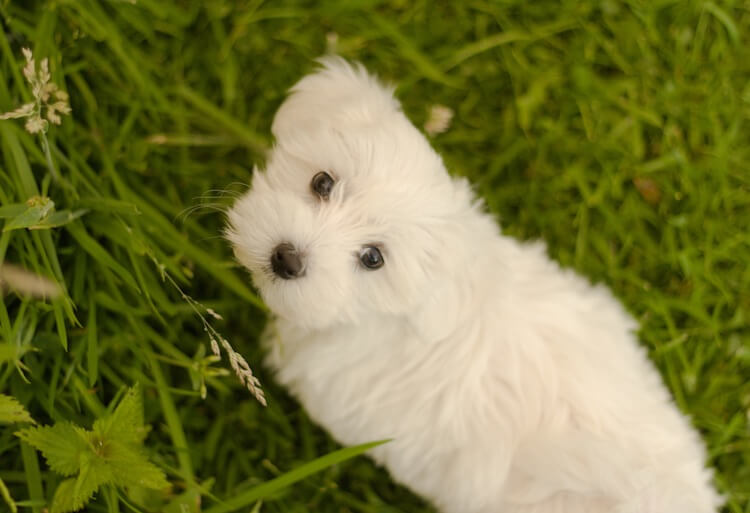
On average they need one cup of kibble each day. Due to their smaller size, this should be split into several smaller, but more frequent, meals throughout the day to keep their blood sugar up.
As a result of their history (as the lap-dog choice of royalty), these dogs are known to be very fussy eaters! Consequently, owners should be sure to feed them nutritious food, otherwise they may refuse to eat.
It is important to factor in any of their food allowance into trick training. If your dog is eating too much, then they may become overweight.
8. The Maltese Dog Is Hypoallergenic

Although they look very similar to Bichon poodles, they are very distinct if you know what to look for.
The key features of this breed include:
- Their round faces
- Dark eyes
- Long (or short) white coats
- Curled tails
They are small dogs, weighing under seven pounds, with most weighing between four and six pounds (the preferred weight is six).
There is no notable difference in weight between males and females. The same goes for height. Both sexes stand between 8 to 10 inches tall.
One of the reasons many families love this breed is because they are hypoallergenic dogs. They make an excellent choice for those who are allergic to dogs, or are worried about having dog hair all over their furniture.
Their coats tend to be kept in one of two styles; long and flowing (traditional) or short (puppy cut). Each coat-type is distinct and most owners prefer one of the other. Both styles have pros and cons.
7. They LOVE To Play

Known for being very playful pups, though they are little, these guys have massive personalities and will happily spend lots of time playing with their owners.
Many owners note that even as they age, the still love to play and retain a puppy-like spirit into their golden years.
When they are not playing with their owner or family, this dog loves a good walk. On average, these dogs need around 60 minutes outside each day.
As a breed, they like to explore. You should try to mix-up your walks as much as possible to give them new scents and environments.
6. Their Nickname Is “Velcro”
As a breed, Maltese dogs tend to like to be close to their owners. At most times throughout the day! Because of this, they are known as velcro dogs.
Although it can be fun to have a dog that follows you around the house, it is important to encourage independence in your puppy from the start. They dote on their owners and as a result can suffer from separation-related problems if they are not well prepared to be left alone.
To prevent issues before it occurs, leave your puppy for very short periods of time and slowly build up to longer periods.
Because of their velcro nature, with a little bit of recall practice, they will come back very easily! Turning recall into a game will help due to their naturally playful temperament.
When walking your dog be sure to walk them on a harness as opposed to a collar. Walking on a collar can put too much pressure on their throat. This can eventually cause tracheal collapse.
As puppies, they will need much less exercise during their growth spurts. Lots of good quality play will be essential to keep their brains and bodies happy without walking them too far.
Over exercising as a puppy can result in joint and bone issues later in life, and so it is important to take shorter walks and find other ways to entertain your puppy.
5. They Don’t Suffer From Small Dog Syndrome

Unlike other small breeds, they do not develop the “yappy” small dog personalities that are so often seen in small companion dogs.
This is not to say that they do not enjoy a good bark. Some are quick to alert their owners to something being wrong. Be it that the postman is delivering or there’s a stranger in the yard! If barking is something that will bother you, this isn’t the dog for you.
One of the reasons the Maltese have been popular (since the roman-era) is due to their funny and lively personalities. They continue their fun and playful personalities well into adulthood.
These dogs are one of the best family dogs through and through. They love to spend time with their person or people and are most content when they are napping on their owner’s lap.
Though they love their family members and do well in a suburban environment, they do not need the space that some larger dogs require. These dogs can do very well in smaller households, such as apartments or condos.
It is important to note that, although they are small and cute, this breed does like to have their personal space respected. Consequently, if you have young children in the house, it is important to teach them the correct way to interact with your dog. They like to play, but, they do not enjoy games where their ears and tail are pulled!
They are known to get on well with other dogs and pets within the same home (especially if they have positive experiences as a puppy).
4. A Maltese Can Have Two Coat Types (Long or Short Hair)
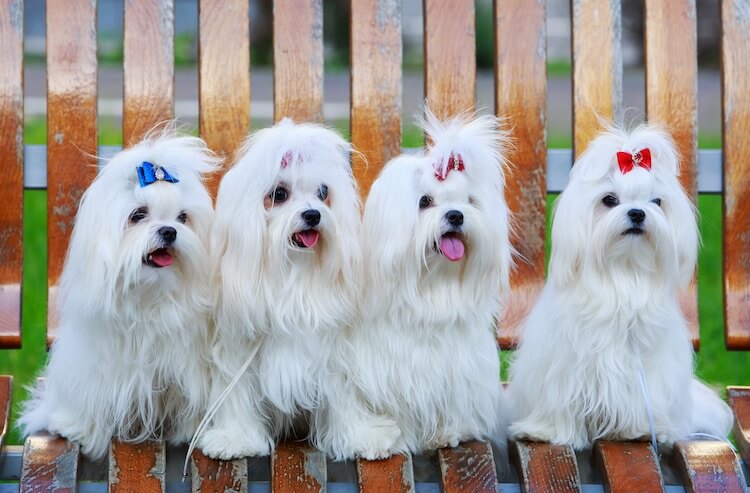
The level of grooming required to maintain your dog’s coat will depend on the cut your dog has:
- If your dog has the long traditional coat (pictured above), then this will require a lot of maintenance.
- A coat that is not acceptable for showing, but is growing ever more popular, is the puppy coat.
Long-hair variants should be brushed with a comb each day. This will help to remove tangles. Maltese owners suggest spraying down a coat with a conditioner and water mix before brushing to act as a detangle.
If you are planning on showing your Maltese, you must only show a long-haired coat; a puppy-cut will be automatically disqualified.
This puppy-cut coat is much less maintenance, as so is much more suitable for those looking for a way to easily keep their dog with limited grooming.
Both coat types need regular bathing to ensure that they remain pearly white. Many owners recommend using only a whitening shampoo! You should be careful not to bathe your dog too frequently, as this can dry out the skin.
Before bathing, you should be sure to gently brush the coat through to remove tangles first, as bathing with tangles can hurt your dog.
After bathing, you should start with a towel dry and then use a hairdryer to completion, before thoroughly detangling and brushing through the coat.
3. They Are Very Intelligent

Maltese dogs are thought to be a very intelligent breed. They love to be with their owners, and love food rewards. These two attributes make training a breeze.
New dog owners should try clicker training puppy training tips to start positive reinforcement training.
These dogs are very small and easily intimidated. It is important to remember not to shout at your dog or use physical punishment. This will result in your dog learning that you are scary!
Instead, opt for force-free, positive training methods for much more effective results.
2. A Maltese Dog’s LifeSpan Is 12 To 15 Years
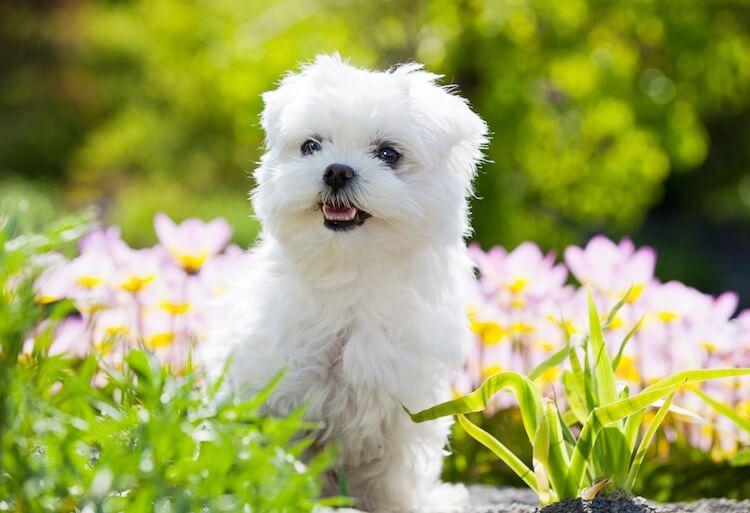
These little dogs often live long and happy lives, living for between 12 and 15 years of age.
Unfortunately, like many purebred dogs, they do suffer from several health-related conditions. The most prominent of which are:
- Patent ductus arteriosus
- White Shaker Syndrome
- Liver shunt
Patent ductus arteriosus is a condition whereby a muscle in the heart does not constrict properly, causing the oxygenated and deoxygenated blood to mix. The condition is usually treated through open heart surgery. It is possible to test for PDA in the parent dogs, as it is believed that it has a genetic component.
White Shaker Syndrome is also prominent within the breed. The condition is characterized by tremors, which are repetitive and involuntary muscle movements. The condition can be treated by steroids, and when medicated, clears up very well.
Liver shunt is also seen is Maltese dogs. This is where the connection between the liver and the heart remains open. Symptoms include “stunted growth” and poor muscle development.
Treatment usually involves a special diet and antibiotics. In some cases, surgery may require to correct the shunt.
1. Maltese Puppies Can Cost $10,000 USD

On average, these puppies will cost between $1,000 and $10,000 USD! This massive variance is due to lots of factors, including the parents’ pedigree and if their linage is famous in the showing world.
Puppies from registered breeders (e.g. American Kennel Club) tend to be slightly more expensive, costing upwards of $4,000 USD.
Although expensive, it is important to remember to buy from a reputable and responsible breeder. Purchasing a puppy from an American Kennel Club registered breeder ensures that they have been assessed and found to be of the highest standard.
Puppy-mill breeders will not take the health and welfare of the dogs into account, focusing solely on how much profit they can make (not dam welfare).
If you wish to adopt a Maltese dog, the American Association Rescue has a list of breeds that need rescuing. Adoption fees will vary between $325 and $625 USD depending on the age and health of the dog.
Maltese FAQs
- Do Maltese dogs bark a lot?
- What is bad about a Maltese?
- Are Maltese good pets?
- Do Maltese shed?
- Do Maltese dogs like to cuddle?
- Can you leave a Maltese home alone?
- Is a Maltese high maintenance?
- Do Maltese bite their owners?
- Are Maltese easy to potty train?
- Are Maltese good for first-time owners?
- Are Maltese dogs smart?
- Do Maltese need lots of exercise?
- How can I make my Maltese happy?
- Are Maltese calm dogs?
- Do Maltese dogs smell?
- How often do Maltese need to pee?
- Can Maltese be outside dogs?
- How often should I walk my Maltese?
- How big does a Maltese get?
Summary
These small white hypoallergenic companion dogs have been around for centuries!
They have captured the hearts of many with their fun and goofy personalities. Their loyalty to their owners and love of being on their laps makes them an excellent match for those who are home a lot and looking for a companion.
Owners should be prepared for a notoriously fussy eater – and to do a lot of grooming! These gorgeous coats need a lot of upkeep, including daily grooming to keep it free of tangles.
Do you have a mystical Maltese at home? Are you thinking about getting one? Let us know your thoughts on this brilliant breed in the comments below.
Other Types of Malteses and Maltese Mixes
Here are some types of Malteses and Maltese mixes to consider if you are still interested in getting a Maltese.

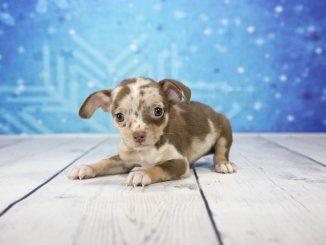
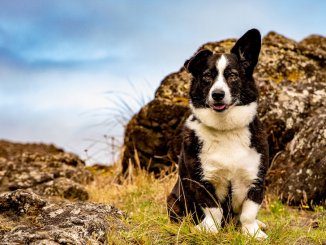
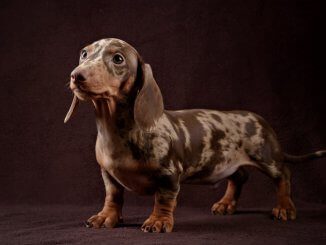
Be the first to comment